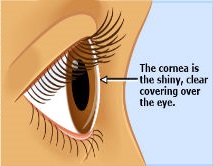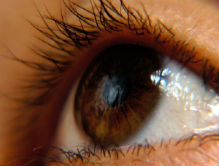What is the cornea?
Cornea is the transparent outermost layer of the human eye. Technically speaking, the cornea is not a single layer; it’s made of five delicate membranes that are arranged one below the other. Cornea plays a major role in focussing your vision; its transparency and its curvy shape helps in refracting light from an object in a way that it falls at the perfect spot on the retina thereby enabling sharpness of vision. In addition to this, the cornea also acts as a protective layer preventing all the dust, dirt and germs from entering into the inside of our eyes. Now, that’s quite an important role to play, ain’t it?.
-

Corneal problems
The corneal surface and its structure are very delicate. Any injury or infection of the cornea can lead to damage leading to loss of corneal transparency and thereby disrupting the normal vision. Common problems that affect the cornea include, corneal ulcers, keratitis (inflammation of the cornea) and keratoconus (thinning of the cornea) apart from the allergies, infections like herpes and the corneal abrasions caused by external injuries. Common symptoms produced are:
1. Pain
2. Reduced Vision
3. Inability to open eyes in bright light
4. Redness
5. Watering
6. Swelling of the eyelid -

Corneal treatment options?
Corneal Diseases require multi-modality of medications which help in reducing the symptoms and curing the disease. Also, these diseases take a very long duration of treatment and frequent follow-ups. The most important factor for early healing and recovery is patient’s compliance to use medications religiously as per the instructions. In cases of infections of cornea, small amounts of superficial corneal tissue is removed (scrapping) and evaluated for presence of type of infection and the organism causing it. Depending on the results, specific medications for that infection are given to help faster recovery.
-

Corneal Transplant
When the loss of corneal transparency is the cause of visual loss, corneal transplantation is the method of choice of treatment. When whole thickness of cornea is affected or damaged due to the corneal disease, a full thickness corneal transplantation is done. The damaged cornea of the patient is completely removed and a healthy cornea from a donor’s eye is transplanted. However, with latest advances, we are able to identify injury restricted to the thinnest layers of the cornea. Remember, the entire cornea itself is only about half a millimeter in thickness. We can now remove only the damaged layers of the cornea rather than the whole cornea & these treatments have revolutionized the practise of eye transplantation.
